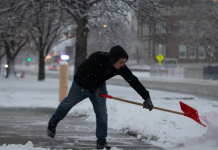An independent review of Kansas’ rising electricity prices shows the current system for setting rates could use some improvements.
In a lengthy report requested by state legislators and submitted by London Economics, analysts concluded three main things: The current ratemaking process has been slightly balanced in favor of utilities, regulators are limited in their ability to protect consumers from paying for underused investments (such as aging coal plants), and additional bill surcharges and have been a key driver of rising rates.
The report looked at rates from all Kansas electric utilities — from co-ops to municipals to Evergy, the largest utility in the state with about 1.5 million customers.
“There are some near-term recommendations,” Evergy Chief Customer Officer Chuck Caisley said. “But the report doesn’t say, ‘Do this and rates will go down’ on any page, any graph, any appendix in the entire thing.”
Lawmakers requested the study in a bill passed during the 2019 legislative session, saying at the time that they were concerned electricity prices were no longer competitive with neighboring states.
They wanted an independent organization to look into the effectiveness of current ratemaking practices and whether there were any options available to state regulators or the legislature to help rates become regionally competitive again.
The report, which came out Wednesday, offered three main suggestions.
Suggestion 1: The Kansas Legislature should create a state energy plan and require utilities to regularly submit an integrated resource plan, or IRP.
The state’s plan would allow the legislative and executive branches to set short and long-term goals about pricing, future transmission needs and renewable energy, giving regulators a clear framework for decision-making. And the IRP would encourage utilities to use the most cost-effective methods for meeting the state’s goals.
Suggestion 2: Lawmakers should consider performance-based regulation, with the state setting targets to incentivize electric companies to be more efficient. They would then be rewarded for that, rather than solely for building more power plants or transmission lines.
Suggestion 3: The legislature should make laws so that utilities can refinance their loans on older, uneconomic investments. This is a process known as securitization and could potentially ease the financial burden when utilities have to shut down coal-fired power plants and other, less profitable long-term investments.
The responses
Evergy generally supports the recommendations, Caisley said, but working out the details of any proposed legislative changes would be important. He added that Evergy is already working on an IRP as a condition of the merger between Westar Energy and Kansas City Power & Light.
He also applauded Kansas Gov. Laura Kelly for proposing to work on a new state energy plan last year, well before this report recommended it.
“We are thrilled that we have a governor that realizes that firm policy direction is important for consumers and it’s important for utilities,” he said.
Advocacy groups, such as the Kansas Industrial Consumers Group, which lobbied for the independent study, are worried the state’s high electricity rates are bad for businesses.
“The utilities have prospered in the last decade way above what the S&P 500 is,” organization president Jim Zakoura said, “while the ratepayers in Kansas have seen their rates increase 70%.”
He said the best chance of Kansas seeing competitive rates again is for the legislature to take the recommendations seriously and make sure they’re implemented.
Dorothy Barnett is the executive director of the Climate and Energy Project, a clean-energy advocacy group. She said state lawmakers and regulators need to finally start planning for grid modernization and the rapid shift to renewable energy.
“It’s time to start talking about different ratemaking structures,” she said.
Ultimately, the report concludes that there is no single, easy fix to reducing Kansas’ electricity rates. Each option considered comes with implementation costs and risks.
The report is the first part of a two-part study; the second part will look at more specific policy choices, such as how to integrate electric vehicles and whether advanced energy technologies like battery storage and microgrids will help consumers. It must be finished by July 1.
Legislators in the House and Senate Utilities Committees are expected to be briefed on the report’s findings when the session begins next week.
Brian Grimmett reports on the environment, energy and natural resources for KMUW in Wichita and the Kansas News Service. You can follow him on Twitter @briangrimmett or email him at grimmett (at) kmuw (dot) org. The Kansas News Service is a collaboration of KCUR, Kansas Public Radio, KMUW and High Plains Public Radio focused on health, the social determinants of health and their connection to public policy.
Kansas News Service stories and photos may be republished by news media at no cost with proper attribution and a link to ksnewsservice.org.




